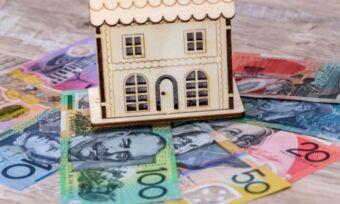Buying an apartment in Melbourne – what to look out for
If you’re interested in buying an apartment in Melbourne, here are some factors that could be worth considering, and some suburbs that are rated highly in terms of both lifestyle and investment potential.

If you’re interested in buying an apartment in Melbourne, here are some factors that could be worth considering, and some suburbs that are rated highly in terms of both lifestyle and investment potential.
Melbourne is a vibrant and exciting city, renowned for its laneway culture and its eclectic mix of restaurants, bars and galleries. If you’re considering making a move there, or purchasing an apartment there as an investment, you may be curious about what features to look out for and what areas of town have the most to offer a prospective purchaser, both in terms of liveability and investment opportunities .
How much money do you need to buy an apartment in Melbourne?
According to recent data from realestate.com.au, the median price for an apartment in Melbourne is currently $550,000, with the price rising 0.9% in the 12 months from May 2023 to April 2024. That said, one of the key factors determining an apartment’s cost is its size. Per realestate.com.au’s figures, at the time of writing, the median price for a one-bedroom apartment in Melbourne sits at $400,000, whereas a two-bedroom is $600,000 and a three-bedroom is $1,070,000.
What features should you look for in a Melbourne apartment?
When choosing an apartment in Melbourne, it is important to consider things including the size and location of the apartment development or complex, the layout and design of the apartment itself, and the future potential of the suburb. According to real estate agents Nelson Alexander, smaller apartment developments and blocks may be more desirable, as they can have lower body corporate fees, and potentially higher resale prices relative to apartments in large complexes, where there may be several similar properties on the market.
Location is important when choosing an apartment. Nelson Alexander also points out that Melbourne has many vibrant inner-city suburbs with cafes, but that if you wish to purchase an apartment close to the city in order to enjoy this lifestyle, you may need to sacrifice on space in order to do so.
When considering the layout of an apartment itself, they say that layout is important, and amongst other things, it may be desirable to have windows in as many rooms as possible, to maximise daylight and also provide ventilation. Similarly, they suggest seeking out an apartment where the spaces are wide rather than narrow, as this can make a space more liveable. Quality fittings and fixtures are also important.
Another consideration is the future of the suburb itself. You may want to consult with a real estate agent or local council about planned developments in the immediate vicinity of the apartment you plan to purchase. For example, a large planned apartment development next door to the building where you plan to buy could block out your view, and potentially lower your resale value if many more similar properties end up on the market.
On the other hand, an infrastructure project like shops or a cultural precinct could make the lifestyle in a particular suburb more appealing, and potentially improve the resale value of your apartment.
How do I choose an apartment in Melbourne?
When choosing an apartment in Melbourne, the purpose behind your purchase may guide your decision. If you are seeking lifestyle and access to amenities, then you may opt for a suburb that has a high standard of liveability, although it is worth being aware that the more liveable a suburb, the higher the price tag might be. On the other hand, if you are seeking to invest, then you may opt for a suburb that can offer a high rental yield. Below is a snapshot of Melbourne suburbs, based on both their liveability, and how appealing they might be to investors.
What are Melbourne’s most liveable suburbs?
If a suburb’s liveability is a priority for you, then you may seek out areas that have the best to offer in terms of amenities and lifestyle. According to Place Score’s 2023 Australian Liveability Census, which considered the top local government areas in major cities, Melbourne residents highly rate suburbs that they perceive to be green, clean and walkable, as well as convenient to amenities. The Top 5 most liveable local government areas in Melbourne, according to their data, are:
- Boroondara (including suburbs like Hawthorn, Kew, Balwyn and Glen Iris)
- Port Phillip (including suburbs like Balaclava, South Melbourne, Ripponlea and Elwood)
- Bayside (including suburbs like Brighton, Hampton, Black Rock and Sandringham)
- Darebin (including suburbs like Northcote, Coburg, Thornbury and Reservoir)
- Stonnington (including suburbs like Malvern, Glen Iris, Toorak and Prarhan)
What Melbourne suburbs are best to invest in?
According to Canstar’s recent Rising Stars Property Market Report, if you are looking to invest in a unit in Melbourne, the top 10 suburbs to invest in (sorted in descending order of median rental yield and then alphabetically) are:
- Brunswick East (4.8%)
- Mill Park (4.6%)
- Ascot Vale (4.5%)
- Frankston (4.5%)
- Northcote (4.3%)
- Oakleigh (4.3%)
- Boronia (4.0%)
- Mitcham (3.6%)
- Nunawading (3.5%)
- Collingwood (1.2%)
Compare Home Loans (Refinance with variable rate only) with Canstar
If you’re currently considering a home loan, the comparison table below displays some of the variable rate home loans on our database with links to lenders’ websites that are available for homeowners looking to refinance. This table is sorted by Star Rating (highest to lowest), followed by comparison rate (lowest to highest). Products shown are principal and interest home loans available for a loan amount of $500,000 in NSW with an LVR of 80% of the property value. Consider the Target Market Determination (TMD) before making a purchase decision. Contact the product issuer directly for a copy of the TMD. Use Canstar’s home loans comparison selector to view a wider range of home loan products. Canstar may earn a fee for referrals.
The comparison rate for all home loans and loans secured against real property are based on secured credit of $150,000 and a term of 25 years.
^WARNING: This comparison rate is true only for the examples given and may not include all fees and charges. Different terms, fees or other loan amounts might result in a different comparison rate.
 Owner occupied
Owner occupied
 20% min deposit
20% min deposit
 Redraw facility
Redraw facility

Up to $2,500 when you refinance with a Greater Bank home loan. Minimum loan amounts and LVR restrictions apply. Offer available until further notice. See provider website for full details. Exclusions, terms and conditions apply.
 Owner occupied
Owner occupied
 20% min deposit
20% min deposit
 Redraw facility
Redraw facility
 Owner occupied
Owner occupied
 10% min deposit
10% min deposit
 Redraw facility
Redraw facility

Up to $4,000 when you take out a IMB home loan. Minimum loan amounts and LVR restrictions apply. Offer available until further notice. See provider website for full details. Exclusions, terms and conditions apply.
 Owner occupied
Owner occupied
 20% min deposit
20% min deposit
 Redraw facility
Redraw facility
 Owner occupied
Owner occupied
 10% min deposit
10% min deposit
 Redraw facility
Redraw facility
Canstar is an information provider and in giving you product information Canstar is not making any suggestion or recommendation about a particular product. If you decide to apply for a home loan, you will deal directly with a financial institution, not with Canstar. Rates and product information should be confirmed with the relevant financial institution. Home Loans in the table include only products that are available for somebody borrowing 80% of the total loan amount. For product information, read our detailed disclosure, important notes and additional information. *Read the comparison rate warning. The results do not include all providers and may not compare all the features available to you.
Home Loan products displayed above that are not “Sponsored or Promoted” are sorted as referenced in the introductory text followed by Star Rating, then lowest Comparison Rate, then alphabetically by company. Canstar may receive a fee for referral of leads from these products.
When you click on the button marked “Enquire” (or similar) Canstar will direct your enquiry to a third party mortgage broker. If you decide to find out more or apply for a home loan, you can provide your details to the broker. You will liaise directly with the broker and not with Canstar. When you click on a button marked “More details” (or similar), Canstar will direct your enquiry to the product provider. Canstar may earn a fee for referral of leads from the comparison table above. See How We Get Paid for further information.
Cover image source: doubedee/Shutterstock.com
This article was reviewed by our Editor-in-Chief Nina Rinella before it was updated, as part of our fact-checking process.

Alasdair Duncan is Canstar's Content Editor, specialising in home loans, property and lifestyle topics. He has written more than 500 articles for Canstar and his work is widely referenced by other publishers and media outlets, including Yahoo Finance, The New Daily, The Motley Fool and Sky News. He has featured as a guest author for property website homely.com.au.
In his more than 15 years working in the media, Alasdair has written for a broad range of publications. Before joining Canstar, he was a News Editor at Pedestrian.TV, part of Australia’s leading youth media group. His work has also appeared on ABC News, Junkee, Rolling Stone, Kotaku, the Sydney Star Observer and The Brag. He has a Bachelor of Laws (Honours) and a Bachelor of Arts with a major in Journalism from the University of Queensland.
When he is not writing about finance for Canstar, Alasdair can probably be found at the beach with his two dogs or listening to podcasts about pop music. You can follow Alasdair on LinkedIn.
The comparison rate for all home loans and loans secured against real property are based on secured credit of $150,000 and a term of 25 years.
^WARNING: This comparison rate is true only for the examples given and may not include all fees and charges. Different terms, fees or other loan amounts might result in a different comparison rate.
 Owner occupied
Owner occupied
 10% min deposit
10% min deposit
 Redraw facility
Redraw facility
Try our Home Loans comparison tool to instantly compare Canstar expert rated options.
The comparison rate for all home loans and loans secured against real property are based on secured credit of $150,000 and a term of 25 years.
^WARNING: This comparison rate is true only for the examples given and may not include all fees and charges. Different terms, fees or other loan amounts might result in a different comparison rate.






